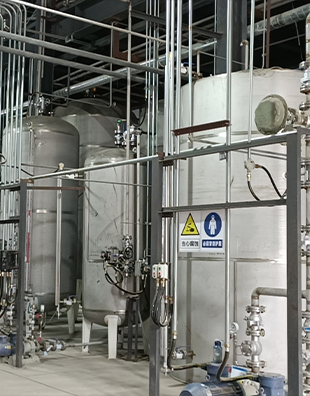jul . 11, 2024 11:54
Back to list
Creating effective flocculation chemicals for efficient water treatment and wastewater management.
Flocculation Chemicals for Water Treatment
Flocculation chemicals play a vital role in water treatment processes by helping to remove suspended solids and contaminants from water. Flocculation is a process where particles in water aggregate and form larger, heavier particles called flocs, which can then be easily removed through processes like sedimentation or filtration.
There are several types of flocculation chemicals used in water treatment, including inorganic coagulants like aluminum sulfate and ferric chloride, as well as organic polymers like polyacrylamide. These chemicals work by destabilizing the charges on suspended particles in the water, causing them to clump together and form flocs.
Inorganic coagulants are typically used in the initial stage of water treatment to neutralize charges on particles and help them aggregate. Aluminum sulfate, also known as alum, is a commonly used coagulant that forms a gelatinous precipitate with suspended particles, making them easier to remove from water. Ferric chloride is another effective coagulant that is often used in conjunction with alum to improve the removal of contaminants like phosphorus and heavy metals.
Organic polymers like polyacrylamide are often used as flocculants in water treatment processes to help improve the size and strength of flocs formed during coagulation

flocculation chemicals . These polymers can be cationic, anionic, or nonionic, depending on the specific application and contaminants being treated. Polyacrylamide flocculants are effective at improving the settling rate of flocs, reducing the amount of time and space needed for sedimentation, and improving the overall efficiency of water treatment processes. In addition to coagulants and flocculants, other chemicals like pH adjusters and antifoaming agents are often used in water treatment processes to help optimize the performance of flocculation chemicals. pH adjusters like lime or caustic soda are used to control the acidity or alkalinity of water, which can impact the effectiveness of coagulation and flocculation processes. Antifoaming agents are used to prevent foam formation during the mixing and settling of flocs, which can interfere with the treatment process and reduce efficiency. Overall, flocculation chemicals are essential components of water treatment processes, helping to remove suspended solids and contaminants from water to make it safe for consumption and other uses. By understanding the different types of flocculation chemicals available and how they work, water treatment professionals can optimize their treatment processes and ensure the production of clean, safe water for communities and industries around the world.

flocculation chemicals . These polymers can be cationic, anionic, or nonionic, depending on the specific application and contaminants being treated. Polyacrylamide flocculants are effective at improving the settling rate of flocs, reducing the amount of time and space needed for sedimentation, and improving the overall efficiency of water treatment processes. In addition to coagulants and flocculants, other chemicals like pH adjusters and antifoaming agents are often used in water treatment processes to help optimize the performance of flocculation chemicals. pH adjusters like lime or caustic soda are used to control the acidity or alkalinity of water, which can impact the effectiveness of coagulation and flocculation processes. Antifoaming agents are used to prevent foam formation during the mixing and settling of flocs, which can interfere with the treatment process and reduce efficiency. Overall, flocculation chemicals are essential components of water treatment processes, helping to remove suspended solids and contaminants from water to make it safe for consumption and other uses. By understanding the different types of flocculation chemicals available and how they work, water treatment professionals can optimize their treatment processes and ensure the production of clean, safe water for communities and industries around the world.
Share
Latest news
-
Understanding Polycarboxylic Acids: Properties, Applications, and Future PotentialNewsJul.28,2025
-
Scale Inhibitor Explained: How to Protect Your System from Limescale and Hard Water DamageNewsJul.28,2025
-
Scale and Corrosion Inhibitors: Essential Chemicals for Industrial Water System ProtectionNewsJul.28,2025
-
Polyaspartic Acid: A Biodegradable Polymer for Sustainable ChemistryNewsJul.28,2025
-
Isothiazolinones: A Versatile Antimicrobial Class with Industrial Power and Regulatory ChallengesNewsJul.28,2025
-
A Deep Dive into 2-Phosphonobutane-1,2,4-Tricarboxylic Acid (PBTC)NewsJul.28,2025





